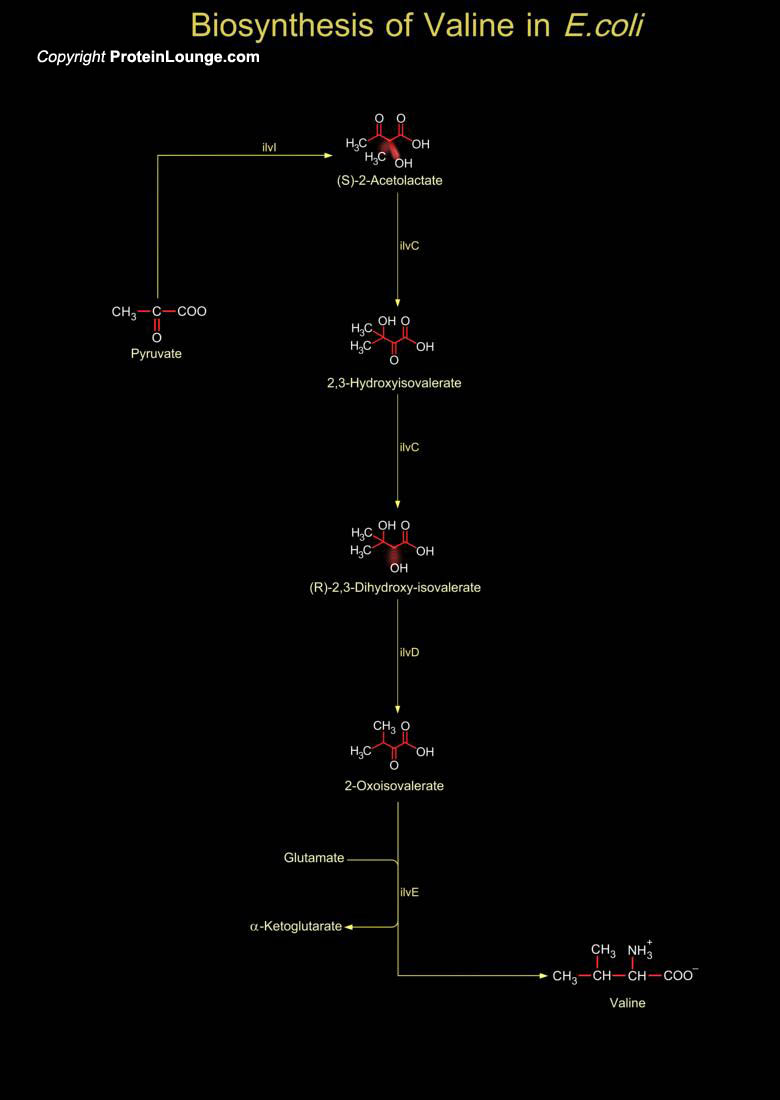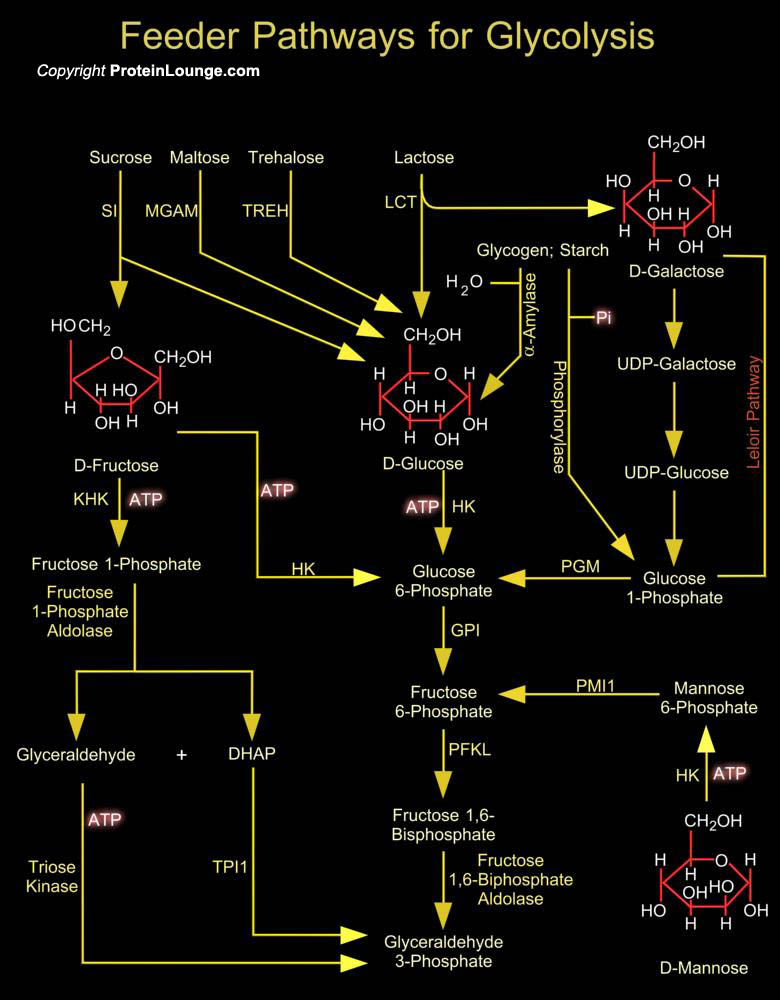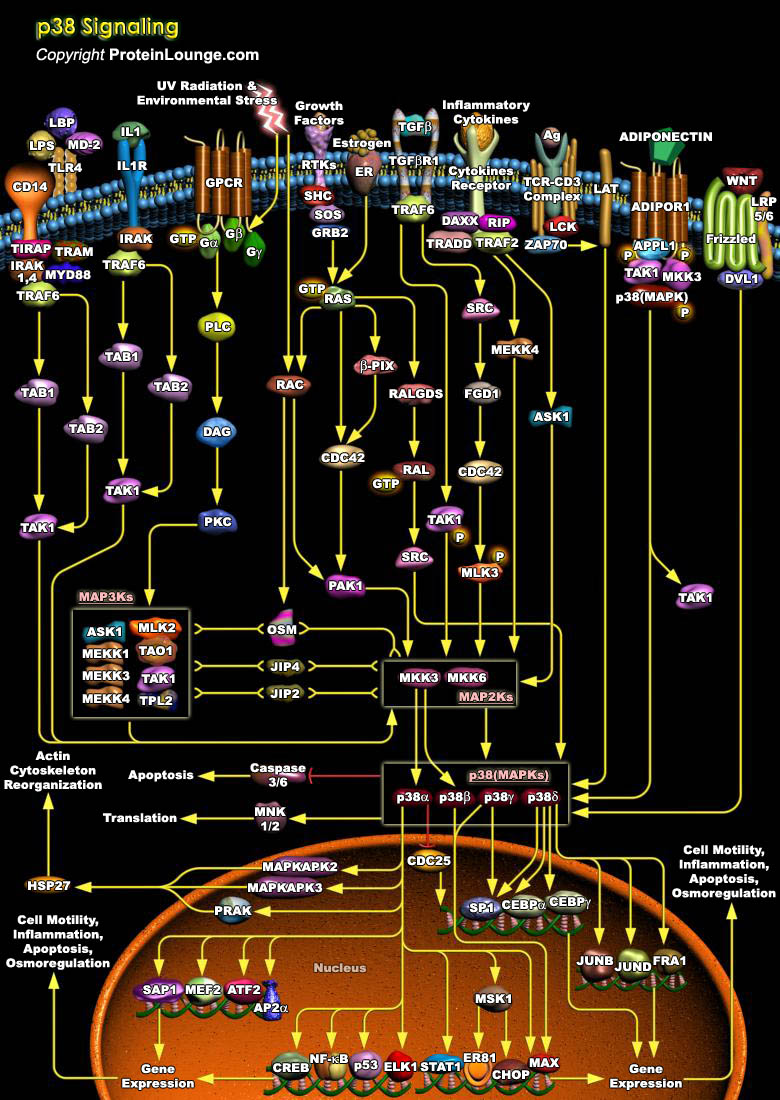Featured Pathways

Calpain is an evolutionary old family of soluble, neutral, calcium-dependent proteases, which have the unique property of using protein cleavage to modify the activity/function of their substrate proteins. There are two major calpain isoforms in the brain, calpain-1 and calpain-2. Calpain-1 and Calpain-2 exhibit opposite functions in both synaptic plasticity and neurodegeneration. Calpain-1[..]

Members of the TNFR (Tumor Necrosis Factor Receptor) superfamily are important for cell growth and survival. CD27 is a member of the TNFR superfamily, which includes TNFR types I and II, NGFR (Nerve Growth Factor Receptor), CD30 (associated with Hodgkin lymphoma), Fas/Apo1 (CD95), CD40, 4–1BB, and OX40. These receptors are known to play a very important role in cell growth and differentiation,[..]

PKR (Protein Kinase-R) is a 68-kDa serine–threonine kinase that appears to play a primary role in mediating the antiviral activities of infected cells. PKR mediates apoptosis induced by many different stimuli, such as LPS (Lipopolysaccharides), TNF-Alpha (Tumour Necrosis Factor-Alpha), viral infection, or serum starvation. Viral infection leads to the increased expression and secretion of the[..]

Phosphatase and tensin homolog deleted from chromosome 10 (PTEN) is a tumor suppressor protein, that is linked to AKT signaling, critically controlling proliferation, survival, migration, energy metabolism and cellular architecture in hematopoietic cells. PTEN is a dual-specificity protein phosphatase and an inositol phospholipid phosphatase that dephosphorylates phosphatidylinositol[..]

Irradiation of DNA by UV (Ultraviolet light) causes lesions, such as Cyclobutane-Pyrimidine Dimers or 6-4PPs (6-4 Pyrimidine Pyrimidone). The most common covalently linked adjoining pyrimidines are T-T (Thymine dimers), T-C (Thymine-Cytosine dimers) and C-C (Cytosine-Cytosine dimers). T-T dimers cause kinks in the DNA strand that prevent both replication and transcription of that part of the[..]


An effective immune response depends on the ability of specialized immunocytes to identify foreign molecules and respond by differentiation into mature effector cells. A cell-surface antigen recognition apparatus[..]



Five amino acids, Alanine, Cysteine, Glycine, Serine and Threonine are broken down to yield Pyruvate. Tryptophan is included in this group since one of its breakdown products is Alanine, which is transaminated to Pyruvate. Alanine is an important in inter tissue nitrogen transporter and is an important part of the Glucose-Alanine cycle. The alanine catabolic[..]

Arginine serves as a precursor for synthesis of protein, nitric oxide, creatine, polyamines, agmatine, and urea. It is synthesized from glutamine, glutamate, and proline and is metabolically interconvertible with the amino acids proline and glutamate. ARG1 (arginase 1) converts L-arginine into L-ornithine and urea. L-ornithine is acted upon by OAT[..]

Many carbohydrates besides Glucose (or D-Glucose) meet their catabolic fate in Glycolysis, after being transformed into one of the Glycolytic intermediates. The most significant are the storage polysaccharides Glycogen and Starch; the disaccharides Maltose, Lactose, Trehalose and Sucrose; and the monosaccharides Fructose (or D-Fructose), Mannose (or D-Mannose) and Galactose (or D-Galactose)[..]




















